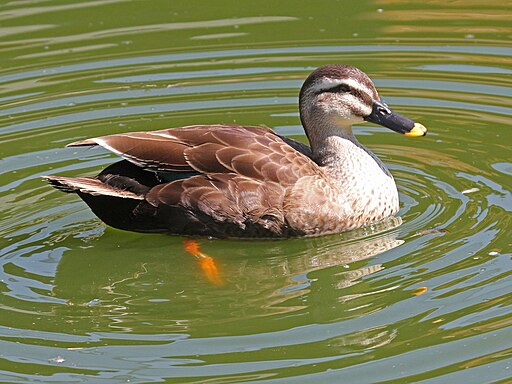 |
| Platypuses at Berkeley's Museum of Vertebrate Zoology |
The platypus is currently tied for my favorite mammal (along with hedgehogs and manatees). Platypuses have a lot of unique characteristics, but one of the features I find most fascinating is their sex chromosomes. Before a post about their chromosomes, there's a few things we need to clear up.
1. The platypus is not a "cross" between a duck and a beaver.
Because of its unique features, there is a lot of confusion about the platypus. The platypus is not some strange hybrid. A duck and a beaver cannot produce an offspring together. The population of platypuses evolved, like all other living organisms.
Upon closer inspection, looking at the picture above, the platypus bill looks very little like a duck bill at all. The platypus bill is wide and flat, and appears to be more leathery than the hard duck bill.
 |
| By DickDaniels (http://carolinabirds.org/) (Own work) via Wikimedia Commons |
 |
| The beaver has a large, flat, hairless tail. By Steve, Washington, DC via Wikimedia Commons |
2. The platypus is not the ancestor of modern mammals, it is a modern mammal.
Although it lays eggs, and doesn't have breasts or nipples, the platypus is still classified as a mammal. Platypuses are part of the group of egg-laying mammals called "monotremes." These are not "proto-mammals." Nor are they "primitive". Monotreme mammals have been evolving for the same amount of time as all other mammals. As humans we share a common ancestor with platypuses, approximately 220 million years ago. That doesn't mean that it isn't useful to understand more about the platypus, but interpretations should be careful not to assume the platypus has maintained the ancestral state of all mammalian traits.
3. The platypus is not the only egg-laying mammal.
In addition to the platypus, there is another group of monotreme mammals that lay eggs: Echidnas. Echidnas and platypuses diverged from one another about 64 million years ago. While they share some characteristics that are unique to monotreme mammals (relative to other mammals), such as egg-laying and oozing milk out of mammary pores instead of having nipples, the two groups of species have accumulated many differences. Perhaps one of the most notable is that there are at least four species of echidna, and only one species of platypus.
Other cool echidna features include their body covering which includes a mixture of course hair and dense, pointy, spines.
 |
| Echidnas at Berkeley's Museum of Vertebrate Zoology |
 |
| Check out those nails. |
4. Platypuses are about the size of a house cat
I don't know why, but when I was growing up, I always imagined that platypuses would be fairly large critters - not unlike a recently discovered branch in the platypus tree that went extinct 5-15 million years ago. Turns out, modern platypuses are actually about the size of a house cat. You can see the pictures below with my hand next to them.
 |
| Not so giant platypus. |
1 comment:
I've seen several echidnas in the last few weeks: mostly spotted in the bush while driving. In fact, not so long ago I saw an echidna and a platypus on the same day (by the road driving to, and at, Tidbinbilla) --- sometimes it gets a little monotremous here.
Post a Comment